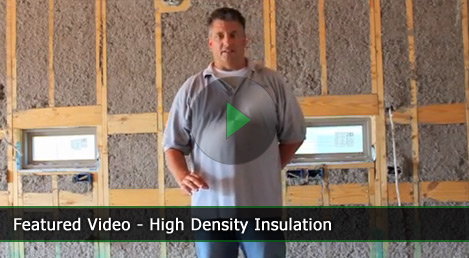You’ve probably heard the term “insulation” before. You may even have a rough idea of what the concept actually means…but do you know what it means for your home? A lack of insulation education can literally end up costing you thousands of dollars. Though we pride ourselves as Flower Mound’s and Dallas’ premiere energy-efficient custom home builder, we’re not just talking about “green homes” here. Having a working knowledgebase regarding insulation can help you make educated decisions when purchasing a future home or upgrading your existing home.
Imagine for a moment that it’s winter and you decide to go outside. What’s the first thing you do? You grab a jacket, correct? Why do you do that? It’s the human instinct to keep your body temperature regulated. You know that by covering yourself with a jacket, and other warm clothing items, you can prevent the escape of heat from your body. That same principle applies to insulating your home. You spend a lot of money keeping your environment cool or warm, depending on the climate outside, and the last thing you want is to lose those dollars by having that conditioned air escape. Insulation is a giant winter coat for your house!
There are a few basic concepts you must understand to complete Insulation 101. Those concepts are R-Value, installation method, and air infiltration.
R-Value
To put it simply, R-Value is used to evaluate the insulation’s ability to resist heat transfer, which means its ability to prevent the air from outside coming in and vice versa. The higher the R-value is, the better insulation you’ll receive. When looking at R-Values, take into consideration the following: assembly, thickness, and location.
- Assembly – The accuracy of R-Value must rely on the assembly. This includes the exterior and interior wall, as well as the insulation material. Don’t worry too much about this, though, since most consumers don’t get involved in grading at this stage.
- Thickness – Thicker does not necessarily mean better, though that’s the assumption many people make. R-Value can increase with thicker material, but efficiency will lower.
- Location – Different R-Values are required based on different regions. This is due to the climate of the surrounding area as well as fuel and material costs. You can check out the U.S. Department of Energy’s website to see what R-Value is required in your area.
Installation
There are several different ways to install insulation: rolls and batts, loose-fill insulation, and rigid foam insulation.
- Rolls and Batts – Fiberglass, rock wool, and other fiber materials are included in this category. They usually come in wall stud spacing widths.
- Loose-Fill Insulation – Fiber materials that come in small particles, such as cellulose, are blown into wall spaces.
- Rigid Foam Insulation – This type of insulation is usually cut to fit into wall spaces.
Installation can be done by either professionals or yourself, depending on the type of insulation you are installing. Do some research on the type of insulation you are installing to determine if you should use a professional or do it yourself, and also make sure it is installed per the manufacturer’s instructions.
Air Infiltration
Air infiltration refers to the ebb and flow of air coming in and out of your house. You will want to insulate your house as much as possible to prevent this air exchange and keep your conditioned air inside and the outside elements out. Some benefits of preventing air infiltration are:
- Better Indoor Air Quality – By preventing outside air from coming into your home, you also prevent pollutants from entering your home, such as pollen, dust, smog, and more.
- Lower Energy Bills – By preventing outside air from entering your home and keeping conditioned air in, your HVAC system doesn’t have to work overtime to maintain the indoor climate you want, which means less energy used to fuel the HVAC system.
- Comfort – Since the outside air isn’t penetrating your home, you won’t have to worry about it cooling down or warming up in poorly insulated areas. That means a consistent, desirable temperature throughout your home to keep you comfortable.





